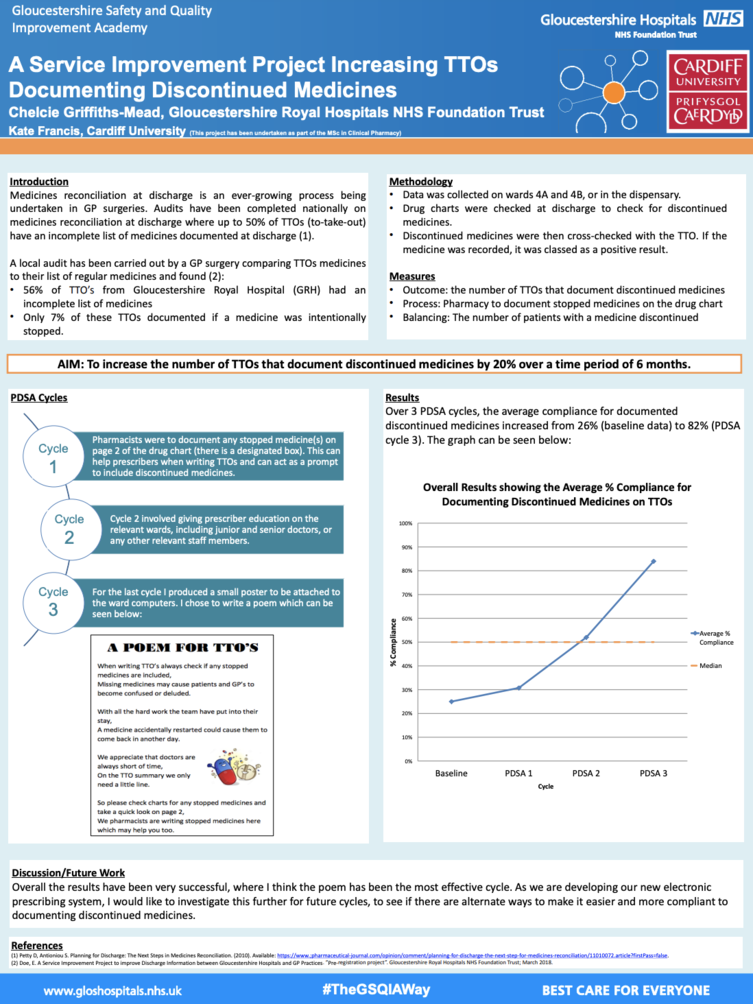Background & Problem: Literature searches show that audits have been completed locally and nationally that relate to medicines reconciliation at discharge. A local GP in Gloucester conducted an audit and found that 56% of TTOs had an incomplete list of medicines documented at discharge, only 7% of these including discontinued medicines. Miscommunication of medicines increases the risk of patient harm.
Data was collected at GRH on wards 4A and 4B (care of the elderly). This target population was chosen as up to 90% of elderly patients have a medicine changed during their hospital admission.
In baseline data, 40 patients were reviewed, with 15 patients having a medicine stopped during their inpatient journey. Out of these patients, only 26% of patients had their discontinued medicine recorded on the TTO.
Aim: Increase the number of TTOs that document discontinued medicines by 20%, over 6 months from May to October.
Method: Stakeholders included the GSQIA team, tutors at Cardiff University and pharmacists across the trust.
Scoping tools used included driver diagrams, process mapping, fish-bone analysis and the 5-why’s.
Three PDSA cycles were carried out:
PDSA 1: pharmacists are to document discontinued medicines on page 2 of the drug chart
PDSA 2: Prescriber education
PDSA 3: a computer insert was produced (poem)
Results: Average % compliance:
Baseline: 26%
PDSA cycle 1: 32%
PDSA cycle 2: 56%
PDSA cycle 3: 82%
The aim was met as the average increased from 26%-82%.

Lessons Learnt:
• Scoping work and literature searches are essential in the early stages of a project
• Don’t be disheartened if initial PDSA cycles aren’t effective – small gradual changes are more realistic and likely to be adhered to
• There is potential for the poem to be circulated across more wards
